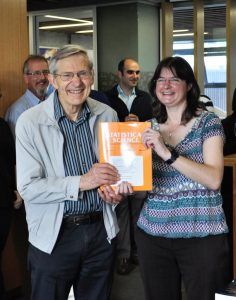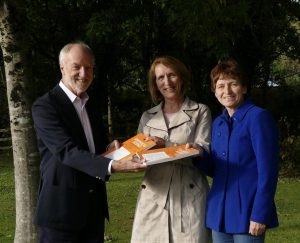Category Archives: Publications

New paper in Environmetrics by Alex
A vector of point processes for modeling interactions between and within species using capture-recapture data
Alex Diana, Eleni Matechou, Jim E. Griffin, Yadvendradev Jhala, Qamar Qureshi
Abstract
Capture-recapture (CR) data and corresponding models have been used extensively to estimate the size of wildlife populations when detection probability is less than 1. When the locations of traps or cameras used to capture or detect individuals are known, spatially-explicit CR models are used to infer the spatial pattern of the individual locations and population density. Individual locations, referred to as activity centers (ACs), are defined as the locations around which the individuals move. These ACs are typically assumed to be independent, and their spatial pattern is modeled using homogeneous Poisson processes. However, this assumption is often unrealistic, since individuals can interact with each other, either within a species or between different species. In this article, we consider a vector of point processes from the general class of interaction point processes and develop a model for CR data that can account for interactions, in particular repulsions, between and within multiple species. Interaction point processes present a challenge from an inferential perspective because of the intractability of the normalizing constant of the likelihood function, and hence standard Markov chain Monte Carlo procedures to perform Bayesian inference cannot be applied. Therefore, we adopt an inference procedure based on the Monte Carlo Metropolis Hastings algorithm, which scales well when modeling more than one species. Finally, we adopt an inference method for jointly sampling the latent ACs and the population size based on birth and death processes. This approach also allows us to adaptively tune the proposal distribution of new points, which leads to better mixing especially in the case of non-uniformly distributed traps. We apply the model to a CR data-set on leopards and tigers collected at the Corbett Tiger Reserve in India. Our findings suggest that between species repulsion is stronger than within species, while tiger population density is higher than leopard population density at the park.
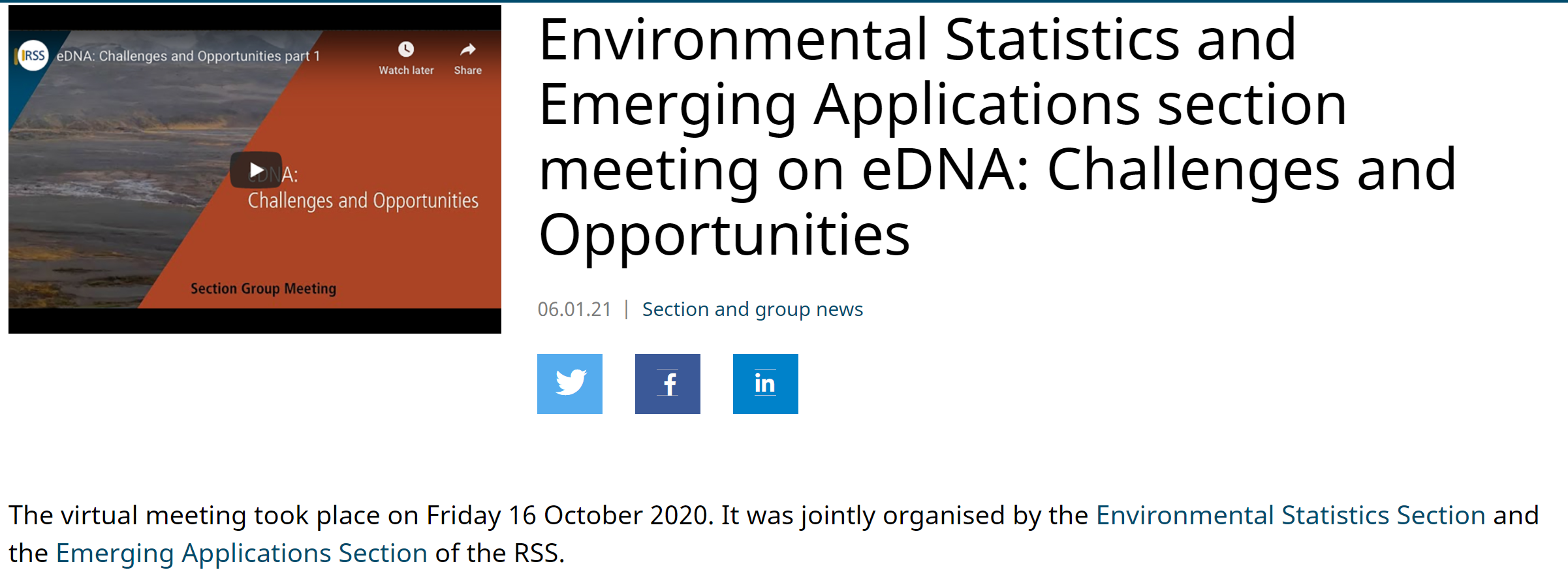
eDNA: Challenges and Opportunities – meeting report
Dr Eleni Matechou, chair of the Environmental Statistics section of the Royal Statistical society, has published the following report about the meeting

Future directions in biodiversity monitoring using citizen science data – meeting report
Eleni Matechou, chair of the Environmental Statistics section of the Royal Statistical Society, has published the following report about the meeting

Paper with Eleni as lead author selected as part of the 10th anniversary celebrations of MEE
One of Eleni’s very first papers, it was published in 2013, in the 4th volume of Methods in Ecology and Evolution, and has been chosen as the paper to highlight from that volume as part of the 10th anniversary celebration of the journal.
Read the story behind the paper in the associated blog post.
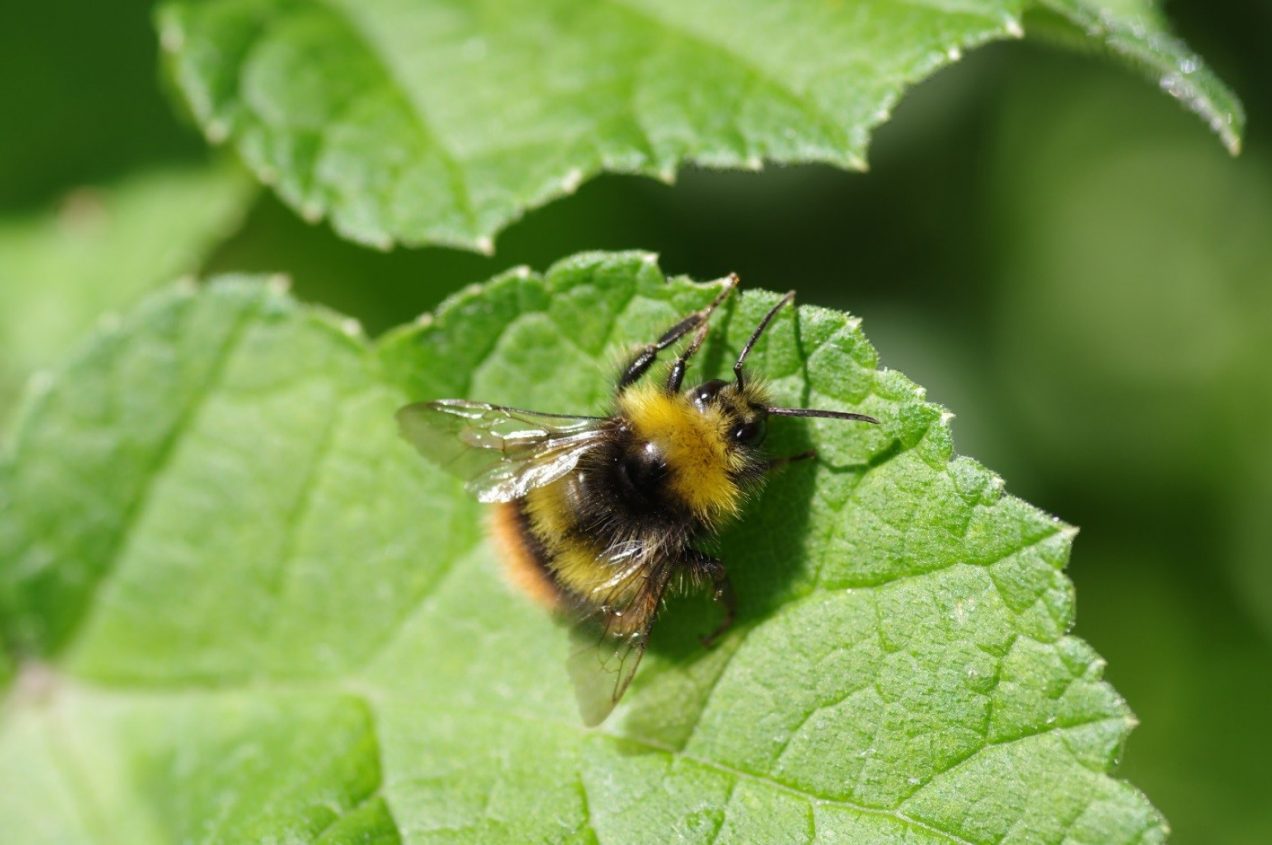
New paper by Eleni and colleagues published in JABES
The work presents novel dynamic mixture models for the monitoring of bumblebee populations on an unprecedented geographical scale, motivated by the UK citizen science BeeWalk.
The models allow us for the first time to estimate bumblebee phenology and within-season productivity, defined as the number of individuals in each caste per colony in the population in that year, from citizen science data.
All of these parameters are estimated separately for each caste, giving a means of considerable ecological detail in examining temporal changes in the complex life cycle of a social insect in the wild. Due to the dynamic nature of the models, we are able to produce population trends for a number of UK bumblebee species using the available time-series. Via an additional simulation exercise, we show the extent to which useful information will increase if the survey continues, and expands in scale, as expected.
Bumblebees are extraordinarily important components of the ecosystem, providing pollination services of vast economic impact and functioning as indicator species for changes in climate or land use. Our results demonstrate the changes in both phenology and productivity between years and provide an invaluable tool for monitoring bumblebee populations, many of which are in decline, in the UK and around the world.
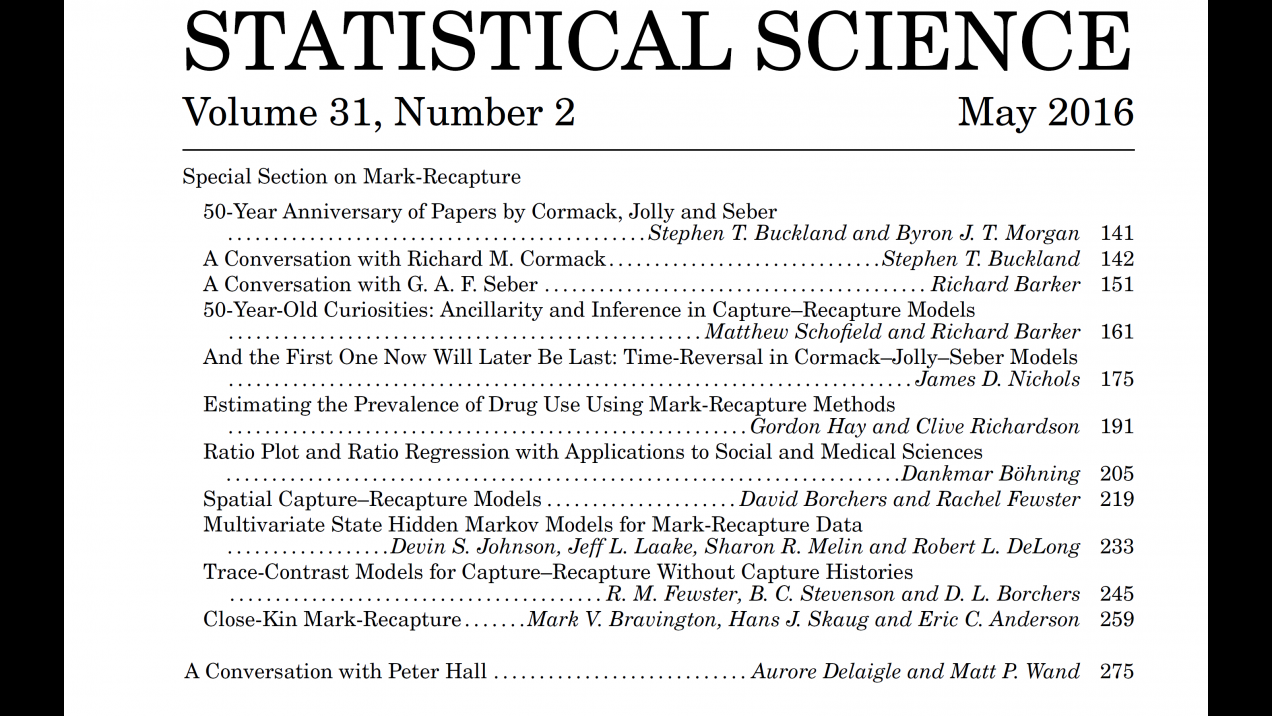
50th anniversary of the Cormack-Jolly-Seber model
Just over 50 years ago, three papers appeared which independently described the fundamental approach for analyzing capture-recapture data. It is now called the Cormack-Jolly-Seber model. This anniversary is celebrated in the second issue of Statistical Science, 2016, guest edited by Steve Buckland and Byron Morgan. It features transcribed interviews with George Seber and Richard Cormack. In addition there are eight research papers that demonstrate how the capture- recapture area is still developing, with applications to genetics, social and medical areas, as well as ecology.
Shown in the photographs are Steve presenting a copy of the issue to Richard, in St Andrews University, Rachel Fewster, a co-author of two of the papers in the issue, presenting a copy to George, in the University of Auckland, and Byron presenting two copies to George Jolly’s two daughters Heather Hannah and Fiona Davies. A third copy goes to their brother David Jolly, who lives in Saudi Arabia.
Rachel and Byron have had a paper published in Journal of the Royal Statistical Society – series C (Applied Statistics).
A new strategy for diagnostic model assessment in capture–recapture
Common to both diagnostic tests used in capture–recapture and score tests is the idea that starting from a simple base model it is possible to interrogate data to determine whether more complex parameter structures will be supported. Current recommendations advise that diagnostic tests are performed as a precursor to a model selection step. We show that certain well-known diagnostic tests for examining the fit of capture–recapture models to data are in fact score tests. Because of this direct relationship we investigate a new strategy for model assessment which combines the diagnosis of departure from basic model assumptions with a step-up model selection, all based on score tests. We investigate the power of such an approach to detect common reasons for lack of model fit and compare the performance of this new strategy with the existing recommendations by using simulation. We present motivating examples with real data for which the extra flexibility of score tests results in an improved performance compared with diagnostic tests.
The full pdf of the paper can be accessed at: http://onlinelibrary.wiley.com/doi/10.1111/rssc.12197/pdf

MEE blog written by Eleni on RSS Model Averaging meeting
Read the MEE blog about the meeting and watch recordings of the three very interesting talks here:
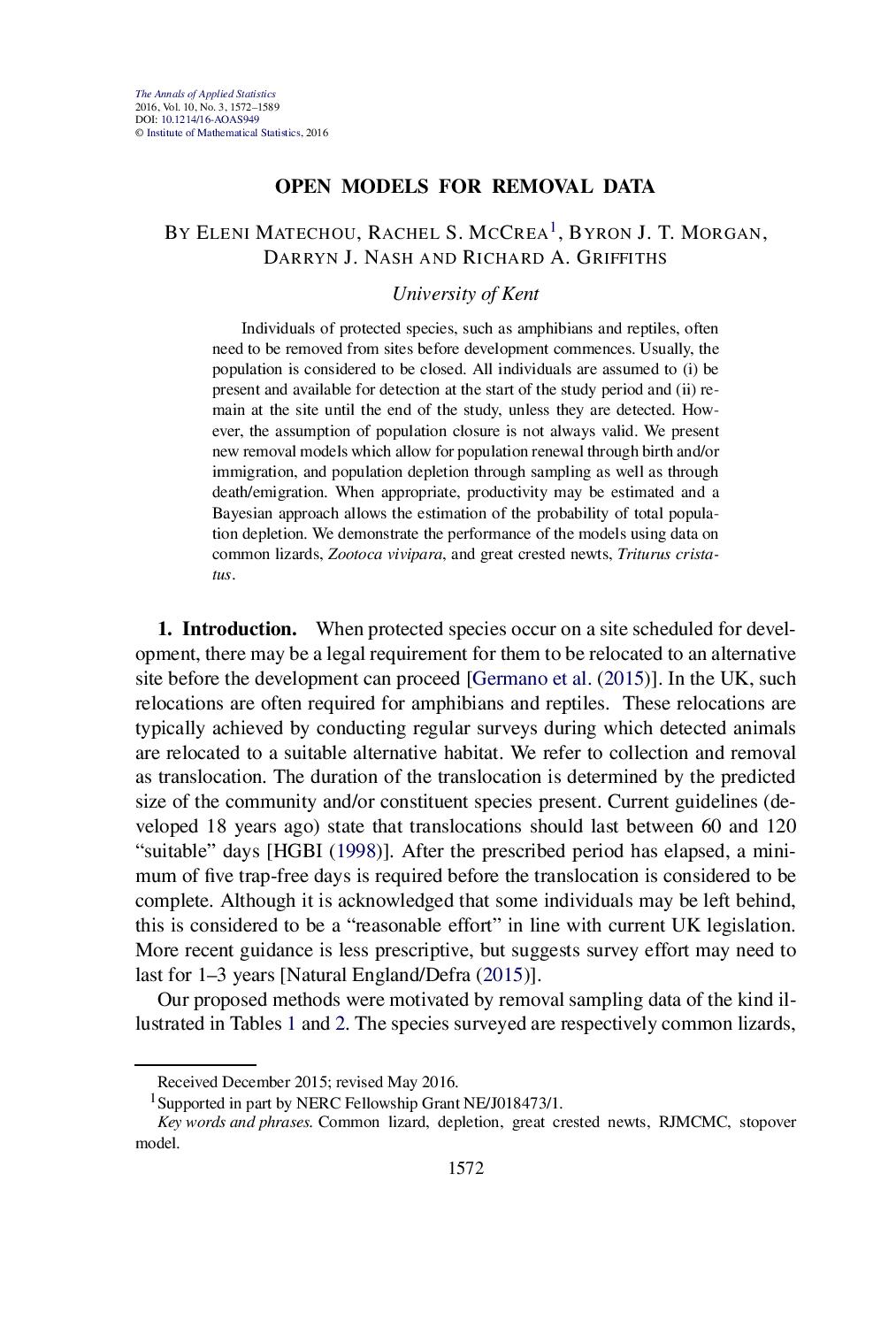
New paper by Eleni, Rachel, Byron and colleagues
The Annals of Applied Statistics
2016, Vol. 10, No. 3, 1572–1589
DOI: 10.1214/16-AOAS949
© Institute of Mathematical Statistics, 2016
OPEN MODELS FOR REMOVAL DATA
BY ELENI MATECHOU, RACHEL S. MCCREA1, BYRON J. T. MORGAN,
DARRYN J. NASH AND RICHARD A. GRIFFITHS
University of Kent
Individuals of protected species, such as amphibians and reptiles, often
need to be removed from sites before development commences. Usually, the
population is considered to be closed. All individuals are assumed to (i) be
present and available for detection at the start of the study period and (ii) remain
at the site until the end of the study, unless they are detected. However,
the assumption of population closure is not always valid. We present
new removal models which allow for population renewal through birth and/or
immigration, and population depletion through sampling as well as through
death/emigration. When appropriate, productivity may be estimated and a
Bayesian approach allows the estimation of the probability of total population
depletion. We demonstrate the performance of the models using data on
common lizards, Zootoca vivipara, and great crested newts, Triturus cristatus.
Read the full paper here https://kar.kent.ac.uk/55734/




